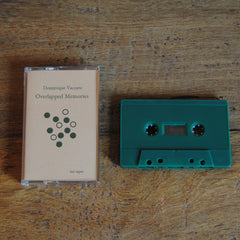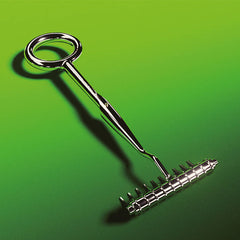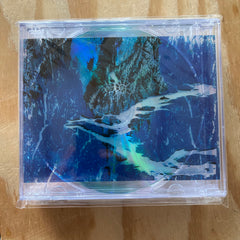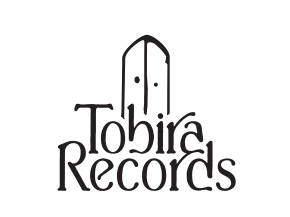クイックビュー
{"id":8984428740858,"title":"Various Artists (Kinky Musik Institute) \/\/ Early Kinky Works 1983-1988 2xCD","handle":"various-artists-kinky-musik-institute-early-kinky-works-1983-1988-2xcd","description":"\u003cp\u003e静岡のノイズ作家K2が、2025年10月にアメリカ・NYのノイズレーベルNew Forcesからリリースした2枚組CDです。\u003c\/p\u003e\n\u003cp\u003eコンピレーションのように見えますが、全てK2自身が1983-1988年に制作したハーシュノイズ〜テクノ〜パワーエレクトロニクス〜ポストパンク20曲を収録。デジパック、シュリンク仕様です。\u003c\/p\u003e\n\u003cp\u003e\u003ciframe src=\"https:\/\/bandcamp.com\/EmbeddedPlayer\/album=508634820\/size=large\/bgcol=ffffff\/linkcol=0687f5\/tracklist=false\/artwork=none\/transparent=true\/\" style=\"border: 0; width: 100%; height: 120px;\"\u003e\u003c\/iframe\u003e\u003c\/p\u003e\n\u003cp\u003eレーベルその他作品は\u003ca href=\"https:\/\/tobirarecords.com\/collections\/nefo\"\u003eこちら\u003c\/a\u003e\u003cspan\u003e \u003c\/span\u003e\/\/\/ Click \u003ca href=\"https:\/\/tobirarecords.com\/collections\/nefo\"\u003ehere\u003c\/a\u003e to see more New Forces releases available at Tobira. \u003c\/p\u003e\n\u003cp\u003e\u003cspan\u003e--------------------------------------------\u003c\/span\u003e\u003c\/p\u003e\n\u003cp\u003e\u003cspan\u003eCD in digipack.\u003cbr\u003e'Compilation album' featuring the various musical aliases of Japanese noise legend \u003cmeta charset=\"utf-8\"\u003eKimihide Kusafuka.\u003c\/span\u003e\u003c\/p\u003e\n\u003cp\u003e\u003cspan\u003e\u003cstrong\u003eTracklist\u003c\/strong\u003e:\u003c\/span\u003e\u003cspan\u003e\u003c\/span\u003e\u003c\/p\u003e\n\u003cp class=\"MsoNormal\"\u003e1. Papa's Murder - Venus Is Forced To Be Naked 05:11\u003cbr\u003e\u003cspan style=\"font-family: -apple-system, BlinkMacSystemFont, 'San Francisco', 'Segoe UI', Roboto, 'Helvetica Neue', sans-serif; font-size: 0.875rem;\"\u003e2. Techno Menses - Dark Disco 04:14\u003cbr\u003e\u003c\/span\u003e\u003cspan style=\"font-family: -apple-system, BlinkMacSystemFont, 'San Francisco', 'Segoe UI', Roboto, 'Helvetica Neue', sans-serif; font-size: 0.875rem;\"\u003e3. K2 - Cthulhu Module #6 07:12\u003cbr\u003e\u003c\/span\u003e\u003cspan style=\"font-family: -apple-system, BlinkMacSystemFont, 'San Francisco', 'Segoe UI', Roboto, 'Helvetica Neue', sans-serif; font-size: 0.875rem;\"\u003e4. The Bikini Pigs - Wet Soap 07:00\u003cbr\u003e\u003c\/span\u003e\u003cspan style=\"font-family: -apple-system, BlinkMacSystemFont, 'San Francisco', 'Segoe UI', Roboto, 'Helvetica Neue', sans-serif; font-size: 0.875rem;\"\u003e5. Gewaltische Anus - Psychic Blues #1 03:44\u003cbr\u003e\u003c\/span\u003e\u003cspan style=\"font-family: -apple-system, BlinkMacSystemFont, 'San Francisco', 'Segoe UI', Roboto, 'Helvetica Neue', sans-serif; font-size: 0.875rem;\"\u003e6. Yuji Asakura - Pornosonic Action 01:51\u003cbr\u003e\u003c\/span\u003e\u003cspan style=\"font-family: -apple-system, BlinkMacSystemFont, 'San Francisco', 'Segoe UI', Roboto, 'Helvetica Neue', sans-serif; font-size: 0.875rem;\"\u003e7. Sakashima-No-Labia - Seite; Oral Mollusk Excitement 09:42\u003cbr\u003e\u003c\/span\u003e\u003cspan style=\"font-family: -apple-system, BlinkMacSystemFont, 'San Francisco', 'Segoe UI', Roboto, 'Helvetica Neue', sans-serif; font-size: 0.875rem;\"\u003e8. The Bikini Pigs - Man With Ugly Talks 06:30\u003cbr\u003e\u003c\/span\u003e\u003cspan style=\"font-family: -apple-system, BlinkMacSystemFont, 'San Francisco', 'Segoe UI', Roboto, 'Helvetica Neue', sans-serif; font-size: 0.875rem;\"\u003e9. Lemon Negative - Live At TMDU, 102283 05:04\u003cbr\u003e\u003c\/span\u003e\u003cspan style=\"font-family: -apple-system, BlinkMacSystemFont, 'San Francisco', 'Segoe UI', Roboto, 'Helvetica Neue', sans-serif; font-size: 0.875rem;\"\u003e10. The Immunes - Bilitis On The Tree 07:01\u003cbr\u003e\u003c\/span\u003e\u003cspan style=\"font-family: -apple-system, BlinkMacSystemFont, 'San Francisco', 'Segoe UI', Roboto, 'Helvetica Neue', sans-serif; font-size: 0.875rem;\"\u003e11. Apnea - Voices From Nowhere 02:19\u003cbr\u003e\u003c\/span\u003e\u003cspan style=\"font-family: -apple-system, BlinkMacSystemFont, 'San Francisco', 'Segoe UI', Roboto, 'Helvetica Neue', sans-serif; font-size: 0.875rem;\"\u003e12. K2 - Cthulhu Module #1 10:54\u003cbr\u003e\u003c\/span\u003e\u003cspan style=\"font-family: -apple-system, BlinkMacSystemFont, 'San Francisco', 'Segoe UI', Roboto, 'Helvetica Neue', sans-serif; font-size: 0.875rem;\"\u003e13. Gewaltische Anus - Psychic Blues #3 07:10\u003cbr\u003e\u003c\/span\u003e\u003cspan style=\"font-family: -apple-system, BlinkMacSystemFont, 'San Francisco', 'Segoe UI', Roboto, 'Helvetica Neue', sans-serif; font-size: 0.875rem;\"\u003e14. Techno Menses - Alice In The Land Of Malice 05:27\u003cbr\u003e\u003c\/span\u003e\u003cspan style=\"font-family: -apple-system, BlinkMacSystemFont, 'San Francisco', 'Segoe UI', Roboto, 'Helvetica Neue', sans-serif; font-size: 0.875rem;\"\u003e15. Yuji Asakura - Topless Noise 04:20\u003cbr\u003e\u003c\/span\u003e\u003cspan style=\"font-family: -apple-system, BlinkMacSystemFont, 'San Francisco', 'Segoe UI', Roboto, 'Helvetica Neue', sans-serif; font-size: 0.875rem;\"\u003e16. K2 With The Immunes - Dysmenorrhea 07:21\u003cbr\u003e\u003c\/span\u003e\u003cspan style=\"font-family: -apple-system, BlinkMacSystemFont, 'San Francisco', 'Segoe UI', Roboto, 'Helvetica Neue', sans-serif; font-size: 0.875rem;\"\u003e17. Hospital In Vain - Kimigayo-A-Go-Go 05:20\u003cbr\u003e\u003c\/span\u003e18. The Bikini Pigs - Boys Be Underground! 07:30\u003cbr\u003e\u003cspan style=\"font-family: -apple-system, BlinkMacSystemFont, 'San Francisco', 'Segoe UI', Roboto, 'Helvetica Neue', sans-serif; font-size: 0.875rem;\"\u003e19. Lemon Negative - Live At MJD, 061583 05:12\u003cbr\u003e\u003c\/span\u003e20. Apnea - Marginalia 03:55\u003c\/p\u003e\n\u003cp\u003e\u003cspan\u003eNew Forces:\u003c\/span\u003e\u003c\/p\u003e\n\u003cp\u003e\u003cspan\u003e\"\u003cem\u003eT\u003c\/em\u003e\u003cmeta charset=\"utf-8\"\u003e\u003c\/span\u003e\u003cem\u003ehe ultimate statement from Japanese noise legend Kimihide Kusafuka. A \"fake compilation\" of tracks recorded under various aliases, originally issued by his Kinky Musik Institute label in 1993. Noise, power-electronics, techno, post-punk, psychedelia... Kusafuka does it all on this compilation. A work of unbounded creativity and a key document of the Japanese cassette underground.\u003c\/em\u003e\u003c\/p\u003e\n\u003cp\u003e\u003cem\u003e\"This is a fake compilation. All pieces in this product were composed and recorded during 1983 to 1988, under the name of 'Kinky Tape Collection,' the preexisting, underground mail art \u0026amp; music project. This is a fake compilation. If you think almost all of this product is of only one personality, you're RIGHT!!! So this is the greatest deception! Thanks. By K. Kusafuka.\"\"\u003c\/em\u003e\u003c\/p\u003e\n\u003cp\u003e\u003cspan\u003eArtist : Kimihide Kusafuka\/'Various'\u003c\/span\u003e\u003c\/p\u003e\n\u003cp\u003e\u003cspan\u003eLabel : New Forces \u003c\/span\u003e\u003c\/p\u003e","published_at":"2025-11-05T13:56:50+09:00","created_at":"2025-11-05T09:34:40+09:00","vendor":"Tobira Records","type":"","tags":["asia","cd","new","new forces","noise"],"price":378800,"price_min":378800,"price_max":378800,"available":true,"price_varies":false,"compare_at_price":null,"compare_at_price_min":0,"compare_at_price_max":0,"compare_at_price_varies":false,"variants":[{"id":47902368465146,"title":"Default Title","option1":"Default Title","option2":null,"option3":null,"sku":null,"requires_shipping":true,"taxable":true,"featured_image":null,"available":true,"name":"Various Artists (Kinky Musik Institute) \/\/ Early Kinky Works 1983-1988 2xCD","public_title":null,"options":["Default Title"],"price":378800,"weight":90,"compare_at_price":null,"inventory_management":"shopify","barcode":"","requires_selling_plan":false,"selling_plan_allocations":[]}],"images":["\/\/tobirarecords.com\/cdn\/shop\/files\/kin1_ff6b36c6-3859-4a24-a7b9-726ce55c0d10.jpg?v=1762302723","\/\/tobirarecords.com\/cdn\/shop\/files\/kin2_2d085c42-de02-47e6-9914-fdb14563ac14.jpg?v=1762302723"],"featured_image":"\/\/tobirarecords.com\/cdn\/shop\/files\/kin1_ff6b36c6-3859-4a24-a7b9-726ce55c0d10.jpg?v=1762302723","options":["Title"],"media":[{"alt":null,"id":37400148574458,"position":1,"preview_image":{"aspect_ratio":1.0,"height":700,"width":700,"src":"\/\/tobirarecords.com\/cdn\/shop\/files\/kin1_ff6b36c6-3859-4a24-a7b9-726ce55c0d10.jpg?v=1762302723"},"aspect_ratio":1.0,"height":700,"media_type":"image","src":"\/\/tobirarecords.com\/cdn\/shop\/files\/kin1_ff6b36c6-3859-4a24-a7b9-726ce55c0d10.jpg?v=1762302723","width":700},{"alt":null,"id":37400148607226,"position":2,"preview_image":{"aspect_ratio":0.973,"height":1200,"width":1167,"src":"\/\/tobirarecords.com\/cdn\/shop\/files\/kin2_2d085c42-de02-47e6-9914-fdb14563ac14.jpg?v=1762302723"},"aspect_ratio":0.973,"height":1200,"media_type":"image","src":"\/\/tobirarecords.com\/cdn\/shop\/files\/kin2_2d085c42-de02-47e6-9914-fdb14563ac14.jpg?v=1762302723","width":1167}],"requires_selling_plan":false,"selling_plan_groups":[],"content":"\u003cp\u003e静岡のノイズ作家K2が、2025年10月にアメリカ・NYのノイズレーベルNew Forcesからリリースした2枚組CDです。\u003c\/p\u003e\n\u003cp\u003eコンピレーションのように見えますが、全てK2自身が1983-1988年に制作したハーシュノイズ〜テクノ〜パワーエレクトロニクス〜ポストパンク20曲を収録。デジパック、シュリンク仕様です。\u003c\/p\u003e\n\u003cp\u003e\u003ciframe src=\"https:\/\/bandcamp.com\/EmbeddedPlayer\/album=508634820\/size=large\/bgcol=ffffff\/linkcol=0687f5\/tracklist=false\/artwork=none\/transparent=true\/\" style=\"border: 0; width: 100%; height: 120px;\"\u003e\u003c\/iframe\u003e\u003c\/p\u003e\n\u003cp\u003eレーベルその他作品は\u003ca href=\"https:\/\/tobirarecords.com\/collections\/nefo\"\u003eこちら\u003c\/a\u003e\u003cspan\u003e \u003c\/span\u003e\/\/\/ Click \u003ca href=\"https:\/\/tobirarecords.com\/collections\/nefo\"\u003ehere\u003c\/a\u003e to see more New Forces releases available at Tobira. \u003c\/p\u003e\n\u003cp\u003e\u003cspan\u003e--------------------------------------------\u003c\/span\u003e\u003c\/p\u003e\n\u003cp\u003e\u003cspan\u003eCD in digipack.\u003cbr\u003e'Compilation album' featuring the various musical aliases of Japanese noise legend \u003cmeta charset=\"utf-8\"\u003eKimihide Kusafuka.\u003c\/span\u003e\u003c\/p\u003e\n\u003cp\u003e\u003cspan\u003e\u003cstrong\u003eTracklist\u003c\/strong\u003e:\u003c\/span\u003e\u003cspan\u003e\u003c\/span\u003e\u003c\/p\u003e\n\u003cp class=\"MsoNormal\"\u003e1. Papa's Murder - Venus Is Forced To Be Naked 05:11\u003cbr\u003e\u003cspan style=\"font-family: -apple-system, BlinkMacSystemFont, 'San Francisco', 'Segoe UI', Roboto, 'Helvetica Neue', sans-serif; font-size: 0.875rem;\"\u003e2. Techno Menses - Dark Disco 04:14\u003cbr\u003e\u003c\/span\u003e\u003cspan style=\"font-family: -apple-system, BlinkMacSystemFont, 'San Francisco', 'Segoe UI', Roboto, 'Helvetica Neue', sans-serif; font-size: 0.875rem;\"\u003e3. K2 - Cthulhu Module #6 07:12\u003cbr\u003e\u003c\/span\u003e\u003cspan style=\"font-family: -apple-system, BlinkMacSystemFont, 'San Francisco', 'Segoe UI', Roboto, 'Helvetica Neue', sans-serif; font-size: 0.875rem;\"\u003e4. The Bikini Pigs - Wet Soap 07:00\u003cbr\u003e\u003c\/span\u003e\u003cspan style=\"font-family: -apple-system, BlinkMacSystemFont, 'San Francisco', 'Segoe UI', Roboto, 'Helvetica Neue', sans-serif; font-size: 0.875rem;\"\u003e5. Gewaltische Anus - Psychic Blues #1 03:44\u003cbr\u003e\u003c\/span\u003e\u003cspan style=\"font-family: -apple-system, BlinkMacSystemFont, 'San Francisco', 'Segoe UI', Roboto, 'Helvetica Neue', sans-serif; font-size: 0.875rem;\"\u003e6. Yuji Asakura - Pornosonic Action 01:51\u003cbr\u003e\u003c\/span\u003e\u003cspan style=\"font-family: -apple-system, BlinkMacSystemFont, 'San Francisco', 'Segoe UI', Roboto, 'Helvetica Neue', sans-serif; font-size: 0.875rem;\"\u003e7. Sakashima-No-Labia - Seite; Oral Mollusk Excitement 09:42\u003cbr\u003e\u003c\/span\u003e\u003cspan style=\"font-family: -apple-system, BlinkMacSystemFont, 'San Francisco', 'Segoe UI', Roboto, 'Helvetica Neue', sans-serif; font-size: 0.875rem;\"\u003e8. The Bikini Pigs - Man With Ugly Talks 06:30\u003cbr\u003e\u003c\/span\u003e\u003cspan style=\"font-family: -apple-system, BlinkMacSystemFont, 'San Francisco', 'Segoe UI', Roboto, 'Helvetica Neue', sans-serif; font-size: 0.875rem;\"\u003e9. Lemon Negative - Live At TMDU, 102283 05:04\u003cbr\u003e\u003c\/span\u003e\u003cspan style=\"font-family: -apple-system, BlinkMacSystemFont, 'San Francisco', 'Segoe UI', Roboto, 'Helvetica Neue', sans-serif; font-size: 0.875rem;\"\u003e10. The Immunes - Bilitis On The Tree 07:01\u003cbr\u003e\u003c\/span\u003e\u003cspan style=\"font-family: -apple-system, BlinkMacSystemFont, 'San Francisco', 'Segoe UI', Roboto, 'Helvetica Neue', sans-serif; font-size: 0.875rem;\"\u003e11. Apnea - Voices From Nowhere 02:19\u003cbr\u003e\u003c\/span\u003e\u003cspan style=\"font-family: -apple-system, BlinkMacSystemFont, 'San Francisco', 'Segoe UI', Roboto, 'Helvetica Neue', sans-serif; font-size: 0.875rem;\"\u003e12. K2 - Cthulhu Module #1 10:54\u003cbr\u003e\u003c\/span\u003e\u003cspan style=\"font-family: -apple-system, BlinkMacSystemFont, 'San Francisco', 'Segoe UI', Roboto, 'Helvetica Neue', sans-serif; font-size: 0.875rem;\"\u003e13. Gewaltische Anus - Psychic Blues #3 07:10\u003cbr\u003e\u003c\/span\u003e\u003cspan style=\"font-family: -apple-system, BlinkMacSystemFont, 'San Francisco', 'Segoe UI', Roboto, 'Helvetica Neue', sans-serif; font-size: 0.875rem;\"\u003e14. Techno Menses - Alice In The Land Of Malice 05:27\u003cbr\u003e\u003c\/span\u003e\u003cspan style=\"font-family: -apple-system, BlinkMacSystemFont, 'San Francisco', 'Segoe UI', Roboto, 'Helvetica Neue', sans-serif; font-size: 0.875rem;\"\u003e15. Yuji Asakura - Topless Noise 04:20\u003cbr\u003e\u003c\/span\u003e\u003cspan style=\"font-family: -apple-system, BlinkMacSystemFont, 'San Francisco', 'Segoe UI', Roboto, 'Helvetica Neue', sans-serif; font-size: 0.875rem;\"\u003e16. K2 With The Immunes - Dysmenorrhea 07:21\u003cbr\u003e\u003c\/span\u003e\u003cspan style=\"font-family: -apple-system, BlinkMacSystemFont, 'San Francisco', 'Segoe UI', Roboto, 'Helvetica Neue', sans-serif; font-size: 0.875rem;\"\u003e17. Hospital In Vain - Kimigayo-A-Go-Go 05:20\u003cbr\u003e\u003c\/span\u003e18. The Bikini Pigs - Boys Be Underground! 07:30\u003cbr\u003e\u003cspan style=\"font-family: -apple-system, BlinkMacSystemFont, 'San Francisco', 'Segoe UI', Roboto, 'Helvetica Neue', sans-serif; font-size: 0.875rem;\"\u003e19. Lemon Negative - Live At MJD, 061583 05:12\u003cbr\u003e\u003c\/span\u003e20. Apnea - Marginalia 03:55\u003c\/p\u003e\n\u003cp\u003e\u003cspan\u003eNew Forces:\u003c\/span\u003e\u003c\/p\u003e\n\u003cp\u003e\u003cspan\u003e\"\u003cem\u003eT\u003c\/em\u003e\u003cmeta charset=\"utf-8\"\u003e\u003c\/span\u003e\u003cem\u003ehe ultimate statement from Japanese noise legend Kimihide Kusafuka. A \"fake compilation\" of tracks recorded under various aliases, originally issued by his Kinky Musik Institute label in 1993. Noise, power-electronics, techno, post-punk, psychedelia... Kusafuka does it all on this compilation. A work of unbounded creativity and a key document of the Japanese cassette underground.\u003c\/em\u003e\u003c\/p\u003e\n\u003cp\u003e\u003cem\u003e\"This is a fake compilation. All pieces in this product were composed and recorded during 1983 to 1988, under the name of 'Kinky Tape Collection,' the preexisting, underground mail art \u0026amp; music project. This is a fake compilation. If you think almost all of this product is of only one personality, you're RIGHT!!! So this is the greatest deception! Thanks. By K. Kusafuka.\"\"\u003c\/em\u003e\u003c\/p\u003e\n\u003cp\u003e\u003cspan\u003eArtist : Kimihide Kusafuka\/'Various'\u003c\/span\u003e\u003c\/p\u003e\n\u003cp\u003e\u003cspan\u003eLabel : New Forces \u003c\/span\u003e\u003c\/p\u003e"}







